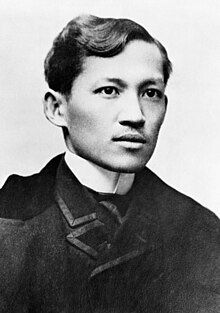 | |
| Regions with significant populations | |
|---|---|
| Philippines, United States, Canada, Spain | |
| Languages | |
| Philippine languages, English, Spanish | |
| Religion | |
| Predominantly Christianity (Roman Catholic majority, Protestant minority) | |
| Related ethnic groups | |
| Sangley, Chinese Filipinos, Spanish Filipinos, Japanese Filipinos, Indian Filipinos, Americans in the Philippines |
| Demographics of the Philippines |
|---|
 |
| Filipinos |

In the Philippines, Filipino Mestizo (Spanish: mestizo (masculine) / mestiza (feminine); Filipino/Tagalog: Mestiso (masculine) / Mestisa (feminine)), or colloquially Tisoy, is a name used to refer to people of mixed native Filipino and any foreign ancestry.[3] The word mestizo itself is of Spanish origin; it was first used in the Americas to describe people of mixed Amerindian and European ancestry.[4] Currently and historically, the Chinese mestizos were and are still ordinarily the most populous subgroup among mestizos; they have historically been very influential in the creation of Filipino nationalism.[5] The Spanish mestizos also historically and currently exist as a smaller population, but remain a significant minority among mestizos which historically enjoyed prestigious status in Philippine society during Spanish colonial times.
- ^ Purino, Anacoreta P. (2008). Rizal, The Greatest Filipino Hero. Rex Bookstore, Inc. p. 156. ISBN 978-971-23-5128-0.
- ^ Rizal, José (1918). Rizal's Own Story of His Life. National Book Company. p. 11.
- ^ "Mestizo - Define Mestizo at Dictionary.com". Dictionary.com.
- ^ "Mestizo - Define Mestizo at Dictionary.com". Dictionary.com.
- ^ Tan, Antonio S. (1986). "The Chinese Mestizos and the Formation of the Filipino Nationality". Archipel. 32: 142. doi:10.3406/arch.1986.2316 – via Persée.